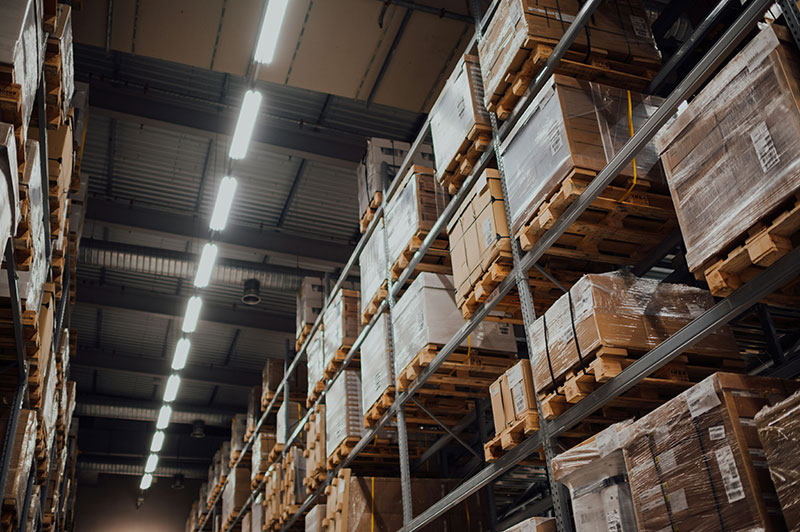Picture a cavernous warehouse. The hum of conveyors, the soft beep of scanners, that whiff of cardboard and bubble wrap. It’s familiar, almost comforting. Yet 2025 turns that scene on its head. Suddenly, the same space feels futuristic, like walking into a warehouse-themed sci-fi film.
The ecommerce warehouse has evolved far beyond rows of shelves and forklift traffic. It now blends slick tech, nimble processes, and eco-friendly practices. Every step is optimized. Every inch measured. And yeah, that kind of obsession can feel borderline compulsive. But it works.
Retailers breathe a sigh of relief when they see packing throughput climb. They nod in surprise at inventory accuracy hitting 99.9 percent. They delight as customers share unboxing videos, utterly enchanted by speed. That’s the emotional payoff. That’s what fuels the shift in ecommerce warehousing.
Automation’s fresh scent travels down the aisles
Imagine a scented candle named “Robotically Clean.” That’s close to how automation smells these days: crisp, efficient, a hint of ozone perhaps. Packing stations staffed by autonomous arms now handle repetitive tasks with surgical precision. Labels peel, boxes fold, void-fill fluffs itself, on cue, every time.
Warehouse managers used to worry about packing errors. Those days are fading.
AI-driven vision systems inspect packages for dents, tears, or wrong labels. The result: fewer returns, happier customers, and fewer headaches (yeah, it happens).
This surge in automation doesn’t elbow out human workers. It elevates them. Staff can focus on quality control, exception handling, even customer service calls. After all, who wants to spend eight hours taping boxes? Robots do. They enjoy it, if enjoyment were in their programming.
Robotics buddy system brings surprise efficiency
Think of two robots meeting on a narrow shelf lane. They pause. They negotiate. One backs up, the other zips by. No human directions needed. This kind of robotic choreography emerges from machine-to-machine buddy systems.
In 2025, warehouses deploy fleets of smaller bots alongside big, forklift-sized counterparts. The little ones fetch individual items; the big ones haul full totes. Together, they form a relay. It’s reminiscent of a track race, only the runners never tire, and the baton is always steady.
Crucially, this setup boosts throughput by up to 40 percent in peak season. Managers who once feared holiday meltdowns now relax. They sip slightly cheaper coffee and crack jokes about chatbot colleagues.
The green ecommerce warehousing wave everyone feels
Sustainability is more than a buzzword. It’s a prerequisite. Customers see a carbon footprint on their digital receipts. They frown. They click away. That reaction stings.
Enter solar-paneled roofs, energy-efficient lighting, and forklifts running on biofuel. Even packaging sees an eco glow-up: 100 percent recyclable, compostable void-fill, soy-based inks on recycled labels. The entire ecommerce warehousing industry sings a verdant tune.
ShipBots led this trend early. Their flagship facility cut energy use by 30 percent in 2024. It felt like watching your electric bill take a nosedive. There’s that thrill again.
Micro-fulfillment hubs: small spaces, big impact
Picture your neighbor’s garage. Now imagine it stocked with goods ready for same-day delivery. That’s the essence of micro-fulfillment. These tiny hubs tuck into urban areas. They snuggle near customers.
This trend explodes because people crave speed. One click, two hours, doorstep. Instant gratification, just like that. Brands win loyalty. Customers brag on social media about overnight arrivals.
ShipBots deploys modular micro-hubs. They slot into empty retail floors, unused warehouses, even shipping containers. Each module feels like a tiny gear in a gleaming machine. And the ROI? Let’s just say CFOs are grinning like they’ve heard a hilarious joke.
Customer expectations in the ecommerce fulfillment era
Remember when two-day shipping was the gold standard? That’s ancient history. Now customers treat next-day as the baseline. Same-day delivery draws applause. One-hour shipping earns standing ovations (figuratively speaking).
These sky-high expectations push ecommerce fulfillment companies to adapt.
Real-time tracking must be flawless. Automated notifications ping customers at each stage: Order received. Item picked. Out for delivery. Delivered. They love it. It sparks delight.
Beyond speed, personalization reigns. Inserts thank-you notes, discount codes, even product recommendations based on purchase history. This touches an emotional chord. It says, “We see you. We care.” That human connection? Priceless.
Data and AI: the brains behind the brawn
Sensors scatter like freckles across the warehouse floor. They track temperature, humidity, foot traffic, everything. This data pours into AI engines. These engines predict demand spikes, optimize stock levels, and suggest staffing shifts.
The effect? Fewer stockouts, fewer overstocks, fewer panicked all-nighters. It feels like a psychic whisper: “Restock your bestselling gadget before demand explodes.” Surprise. Relief. Confidence.
ShipBots’s AI lab churns out algorithms that refine picking routes, minimize congestion, and even schedule maintenance when a conveyor belt’s performance dips. Think of it as preventive healthcare for machinery. Nobody likes the dentist. Yet routine checkups save pain later.
How ShipBots pushes the envelope on trends
ShipBots doesn’t follow trends. They spark them. This year, they unveiled a pilot program combining drones with traditional couriers. Drones handle light parcels; vans handle bulky boxes. The drones zip through morning fog, humming overhead. They deliver flash drives, small electronics, even bakery treats. Except when gulls get curious (yeah, it happens).
They also tested AR glasses for pickers. Imagine wearing sleek specs that overlay item locations onto your vision. No clipboards. No handheld devices. The warehouse floor lights up in augmented reality. Staff felt like superheroes. Productivity spiked.
Managers sipped their coffee, again, much cheaper.
Then there’s ShipBots’s rise in cold-chain logistics. With fresh foods and pharmaceuticals booming online, temperature control became vital. Their refrigerated zones mimic icy caves. Sensors scream alerts if a pallet’s temperature drifts. This gives clients peace of mind. And, frankly, a cool story to tell at parties (metaphorically).
Human touch in a high-tech world
Amid all the robots, sensors, and drones, humans remain central. Training programs emphasize critical thinking. Employees learn to troubleshoot drone drop-offs gone
awry or reconcile data mismatches. These moments require empathy and creativity, their algorithms can’t replicate that.
ShipBots hosts quarterly hackathons. Teams pitch process improvements. One group suggested voice-activated packing instructions. Another devised a gamified picker performance leaderboard. Everyone joined in the fun. The resulting innovations rolled out in weeks, not years.
Looking ahead: What’s next for ecommerce warehouse innovation?
2025’s trends feel wild, yes. But the pace quickens. By 2026, expect even more integration: voice assistants guiding forklifts, robotic arms that learn by watching humans, biodegradable packaging that dissolves on command.
The future feels electric. It hums with possibility. It smells like fresh cardboard and new tech. It tastes of victory when customers rave about flawless delivery.
ShipBots’s approach offers a blueprint: combine tech with human insight, chase sustainability, and never settle. The question isn’t about whether to adopt these trends. It’s about which to try first.
So what will your next move be?






